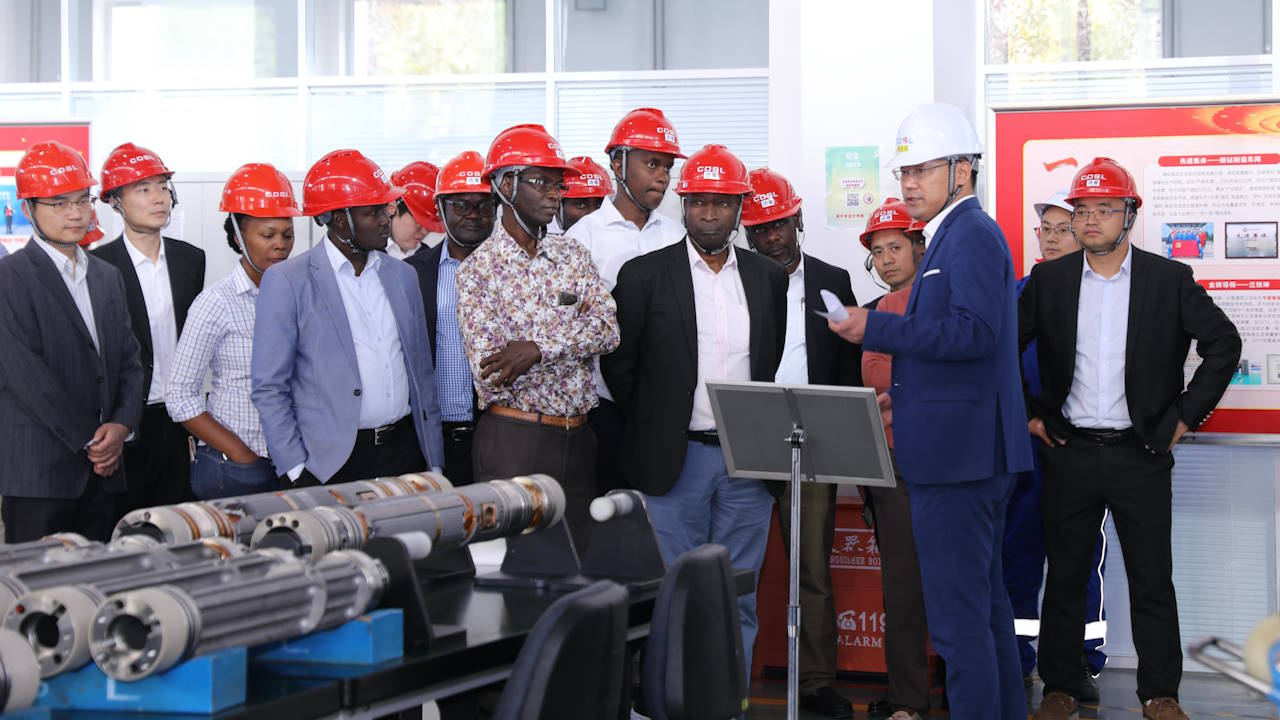
Issued by: Ministry of Energy and Mineral Resources
Panyu Chu Kong (PCK) Steel Pipe Co, Ltd, the company contracted to supply line pipe for the East Africa Crude Oil Pipeline (EACOP), said that the first batch of 100 kilometres of pipe has been completed and is in the process of being delivered to the port of Tanga in Tanzania.
Xie Leshan, the president of PCK, told a team from the Petroleum Authority of Uganda, led by Ernest Rubondo, the executive director, that the company was committed to ensuring timely delivery and high quality pipes. The PAU team visited PCK’s pipe mill in Lianyungang as part of a verification and validation visit to the activities of the Kingfisher Development Project and the East Africa Crude Oil Pipeline (EACOP) Project in China.
The developers of the EACOP project are CNOOC Uganda Limited, TotalEnergies EP Uganda, Tanzania Petroleum Development Corporation (TPDC), and Uganda National Oil Company (UNOC).
“The readiness of the first 100km of pipe for the pipeline is an indication of the commitment of the government of Uganda and the oil companies to deliver first oil,” said Mr Rubondo. “The achievement of this and other milestones is also a result of Uganda’s stable macroeconomic environment and legal and institutional framework, which have enabled and continue to enable the oil industry to thrive,” he added.
During the visit, which coincided with China’s Belt and Road Initiative Forum, Ernest Rubondo and Liu Yongjie, the Chairman of CNOOC International, met at the CNOOC International Headquarters in Beijing on 21 October 2023.
“This meeting marks an important development in the ongoing collaboration between Uganda and China in the oil and gas sector,” said Mr Rubondo.
Mr Liu and Mr Rubondo discussed the progress of the Kingfisher project and received assurances of CNOOC’s commitment to fulfil its responsibilities on the project and to expand cooperation to deliver a ‘Shining Star’ project in Uganda.
They also discussed strategies for the commercialisation of Uganda’s oil and gas resources and ways to maximise the value generated by these projects in the country, extending to local communities and national companies, thereby further promoting economic growth and development.
Mr Rubondo and Mr Yongjie agreed that the timely delivery of the project together with the development of national and community content was the best way to ensure a win-win situation from the Kingfisher project.
The delegation also visited the Shougang Beijing Group’s Qian’an steel mill, which supplies the steel plates used in the manufacture of the pipes.
Mr Rubondo said the visit was not only an exchange with CNOOC and its major contractors, but also an exercise in understanding the achievements of Chinese-style modernisation and the Belt and Road Initiative.
“These collaborations not only have economic implications, but also contribute to the development and growth of the oil and gas industries of both nations,” Mr Rubondo said in remarks at the Qian’an steel plant.
The PAU delegation also met various companies contracted by both TotalEnergies and CNOOC Uganda to provide works and services for the oil and gas projects in Uganda.
These contractors included COOEC (part of a joint venture undertaking the detailed engineering, procurement and construction of the Kingfisher Project central processing plant and other facilities), COSL (drilling services), CENERTECH (well completion tools, core cutting and fishing, drilling software and coating of the Kingfisher feeder pipeline) and CPP (construction of the EACOP pipeline and surface facilities).
The East African crude oil pipeline will have the capacity to pump up to 230,000 barrels of crude oil per day from western Uganda to the Indian Ocean coast of Tanzania through a specially designed 1,443km ‘smart’ pipe. Parts of the pipe will have heat tracing to ensure that the high quality, low-sulphur Ugandan crude, which is waxy at surface temperatures, flows evenly.
The pipeline, which will be buried up to 1.5 metres below the surface along its entire length, will be lined with high-tech insulation and fitted with sensors and shut-off valves to minimise the risk of leaks.






